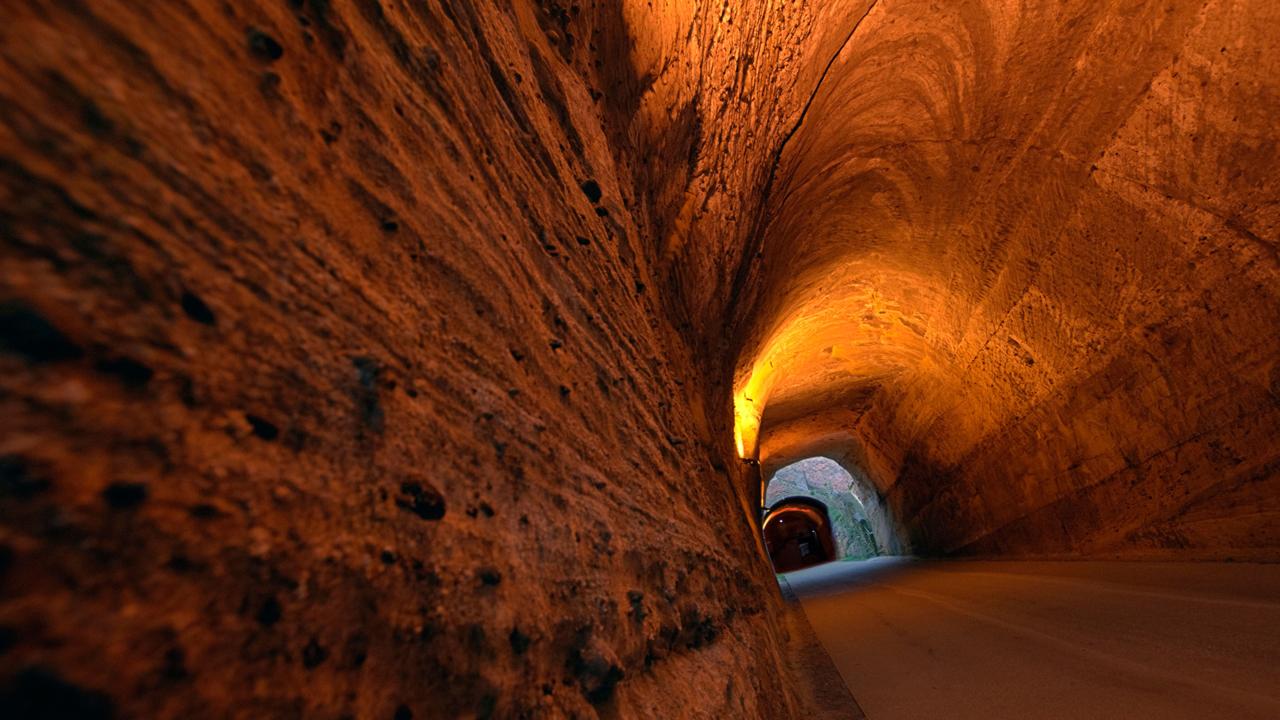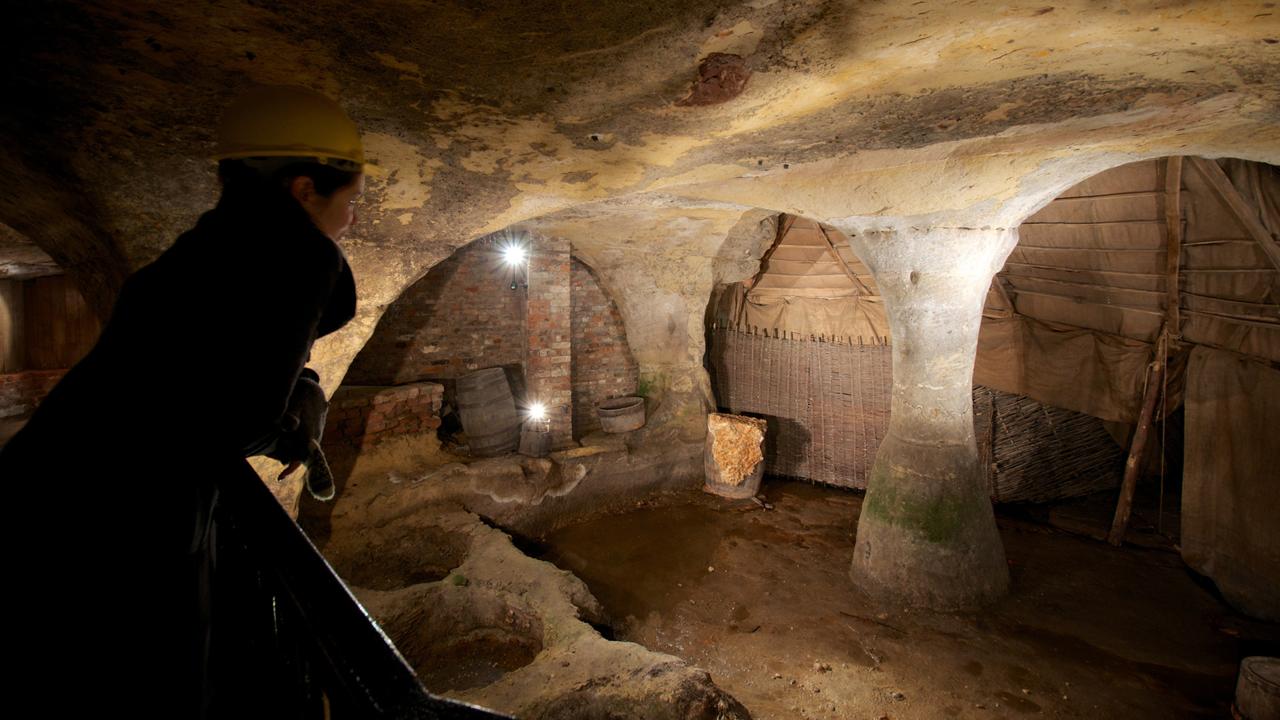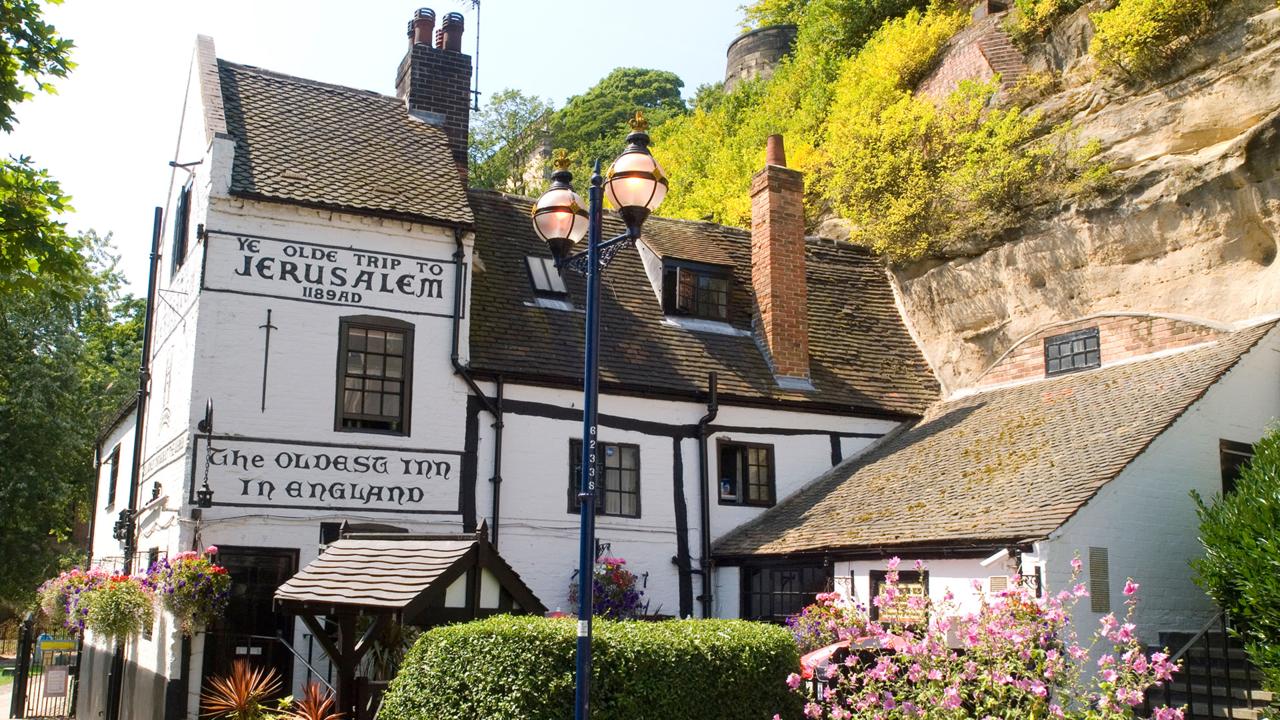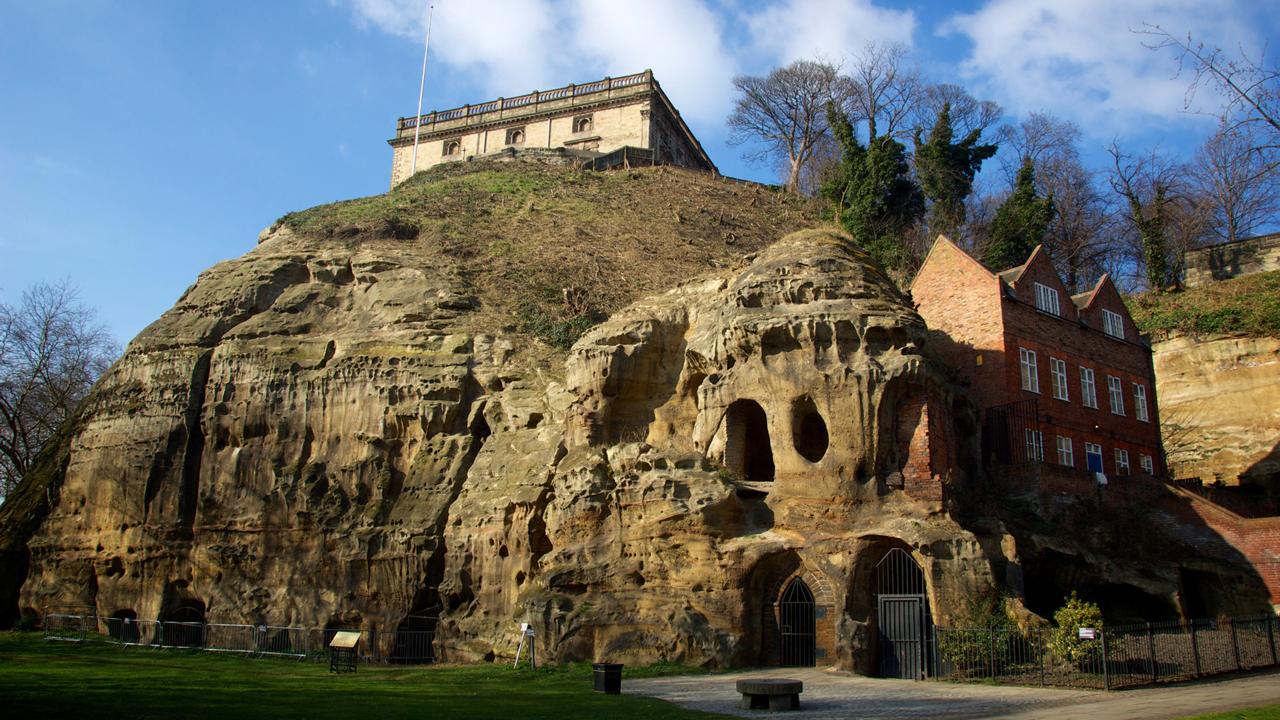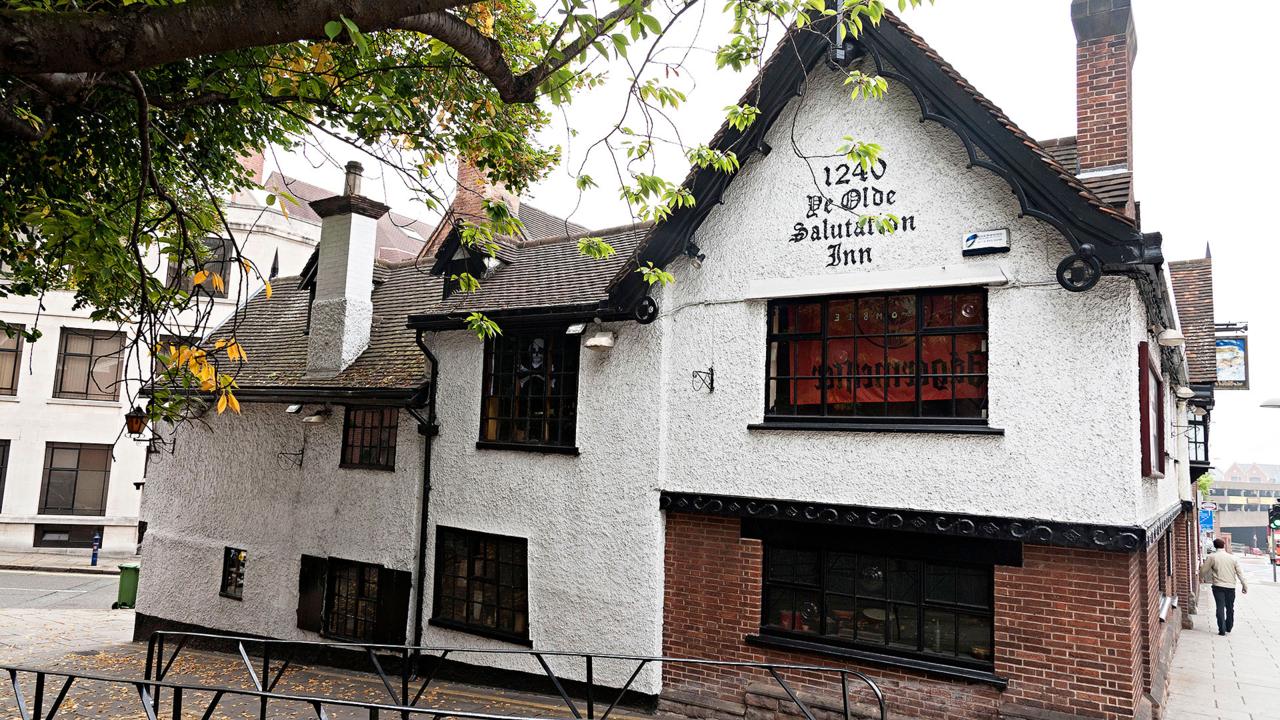The city that hides an underground world
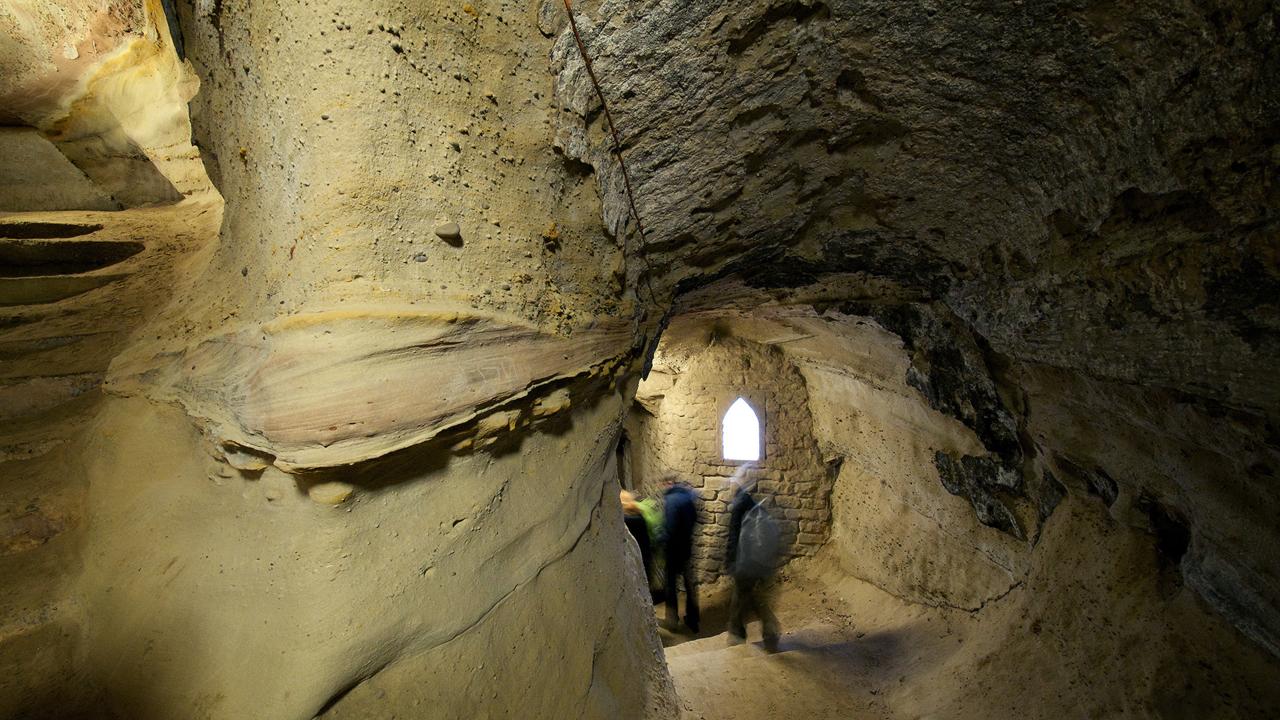
Nottingham is an English city with a secret: inhabitants have been digging caves here for 1700 years. More than 500 have been found – and a new project is revealing their secrets.
Nottingham is a city with a secret: below its shops, restaurants, houses, malls and pubs lies a hidden world of caves and tunnels.
Best known to visitors for the Robin Hood legends of nearby Sherwood Forest, Nottingham is also home to more than 500 man-made caves. Dug through layers of soft sandstone, they tell a story spanning hundreds of years, from medieval monks to King Henry VIII. And a new app – detailing dozens of the caves with their histories, access information, photographs, 360-degree panorama shots and 3D fly-through videos – aims to open this underground world to visitors.
The first reference to the labyrinth beneath Nottingham dates back to the 9th Century, when the area was named Tigguo Cobauc – Welsh Anglo-Saxon for “the place of caves”. The name was given to the town by a travelling monk, who encountered a local population living inside the caves.
Some 1200 years later, this name could still apply, with some of the tunnels lying beneath surprisingly modern establishments. The City of Caves, Nottingham’s largest network of caves open to the public, lies beneath Broadmarsh Shopping Centre.
A labyrinth of tanneries, air raid tunnels and slum housing, the oldest sections of the City of Caves date back to the 4th Century. Early inhabitants dug into the soft sandstone to create a cosy place to sleep – temperatures in the caves stay a constant 16C year-round.
By the 15th Century, people were no longer living underground, but the caves had taken on a second life as cesspits – used for fertilising the city’s farms and the supplying the tanneries with waste for the leather making process.
The City of Caves’ tannery – the country’s only underground tannery – might have also saved Nottingham from one of the history’s darkest periods. The town was one of the few places in Britain to remain free of the plague and it is believed the tannery caves prevented rodents from nesting and breeding within the area.
The caves’ lifesaving abilities didn’t end with the plague. As a manufacturer of ammunitions, Nottingham was severely bombed during World War II. Ideal for absorbing the impact of bombs, 86 of the caves were converted into air raid shelters. The sandstone caverns saved thousands of lives.
Other caves and passageways were used for far more nefarious purposes. The infamous Mortimer’s Hole, for example, lies under Nottingham Castle, which was built in 1067 and has taken on many forms over the years. The eerie 300-step passageway winds down from the castle through rock to England’s oldest inn, Ye Olde Trip to Jerusalem, which dates to 1189.
The tunnel takes its name from Sir Roger Mortimer, who, together with Queen Isabella, is rumoured to have killed Isabella’s husband King Edward II and taken the throne for themselves.
On the night of 19 October 1330, the young King Edward III and a band of his loyal supporters entered the tunnel. They burst into his mother Isabella’s bedroom, seizing the pair. Sir Roger was hanged at the Tower of London; Isabella, escaping with a much lighter sentence, was forced into retirement.
But far more everyday establishments than Nottingham Castle have underground caverns. “If you manage a pub in the city, I'd say nine out of 10 times you would have caves. They're everywhere,” said Tom Flynn, manager of the Bell Inn, one of Nottingham’s oldest pubs.
Tree-ring dating suggests that local Carmelite monks built the first public house on the site in 1420. The Bell Inn’s cave system, which is large enough to extend under the adjacent buildings, includes two wells that the monks used for drawing water to brew their ales.
The Bell Inn remained in the monks’ hands until King Henry VIII’s dissolution of the monasteries in 1539; at that point, it became a secular alehouse. During World War II, a section of brickwork in the cave was put up by the Ministry of Defence, who hoped to use it as a bomb shelter – a plan they changed after discovering a river ran along the back wall. Today, the Bell’s caves are very much a working cellar, stocked with beer and wine and with cask ale pipes going up to the bar.
While the Bell’s caves feel bright and lived in, there are much spookier caves under the Ye Old Salutation Inn, which dates back to 1425. The Salutation’s cave system consists of rock cut passageways, cells, chambers and chimneys, all dug out at various points in the Medieval, Georgian and Victorian times.
There is even a ghost: a young girl called Rosie. In one of the darkest corners, visitors leave drinks, marbles and dolls for her. “I'm a sceptic where ghosts are concerned, but I've seen things in this pub that really do make me wonder,” manager Terry Webster said.
At 6:20 one morning, Webster said he was going downstairs to the pub when he heard footsteps and a cough. Thinking staff from the night before had forgotten to lock up, he ran down to the bar to nab the intruder, but there was no one to be found. A review of the pub’s security footage also came up empty.
Pulling all of this extensive, underground history together – ghosts aside – is the Nottingham Caves App, the result of on-going work by Trent & Peak Archaeology.
Project manager Dr Paul Johnson said that of the 500-odd known caves in Nottingham, 76 have been investigated and recorded in detail. The team weren't able to record as many of the caves as they had initially hoped as many were more complex than they first thought.
"You're not just doing a structural record. You're also recording things like graffiti on the walls, individual elements of sculpture and things like that,” Johnson said. “So the time involved in doing it multiplies quite quickly."
Even so, during the survey, the team found evidence of gentlemen’s clubs, bowling alleys, summer gardens and industrial spaces.
Johnson said plans are underway to continue mapping and recording the caves with the help of local volunteers. After undergoing confined spaces and basic recording training, the volunteers will go out and speak to property owners, identify new caves and – where it's safe – go in and complete a quick survey. They hope to begin work in the first half of 2016.
Ultimately, the idea is to open up more of Nottingham’s underground to visitors – allowing more people to appreciate the unique history found beneath the city.
This story is a part of BBC Britain – a series focused on exploring this extraordinary island, one story at a time. Follow us on Facebook, Twitter and Instagram.
Политика конфиденциальности | Правила пользования сайтом
